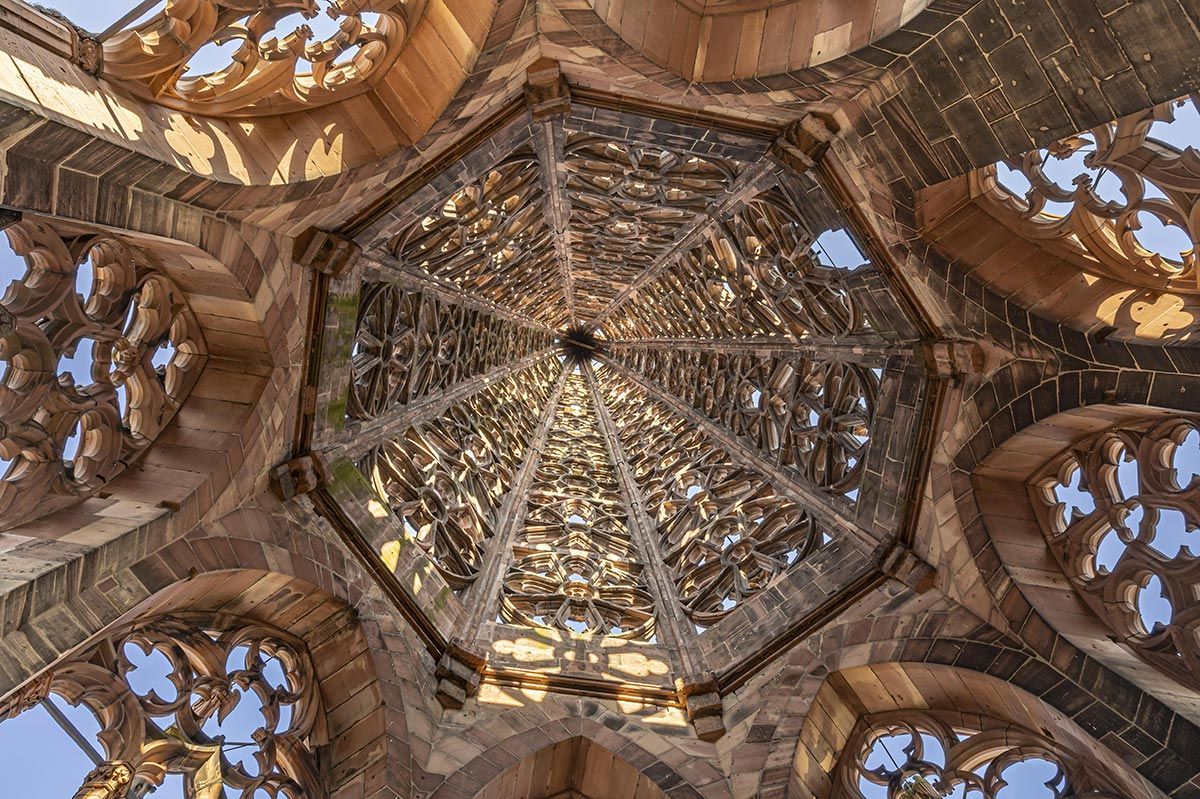Do you have any questions?
We are happy to advise you free of charge!
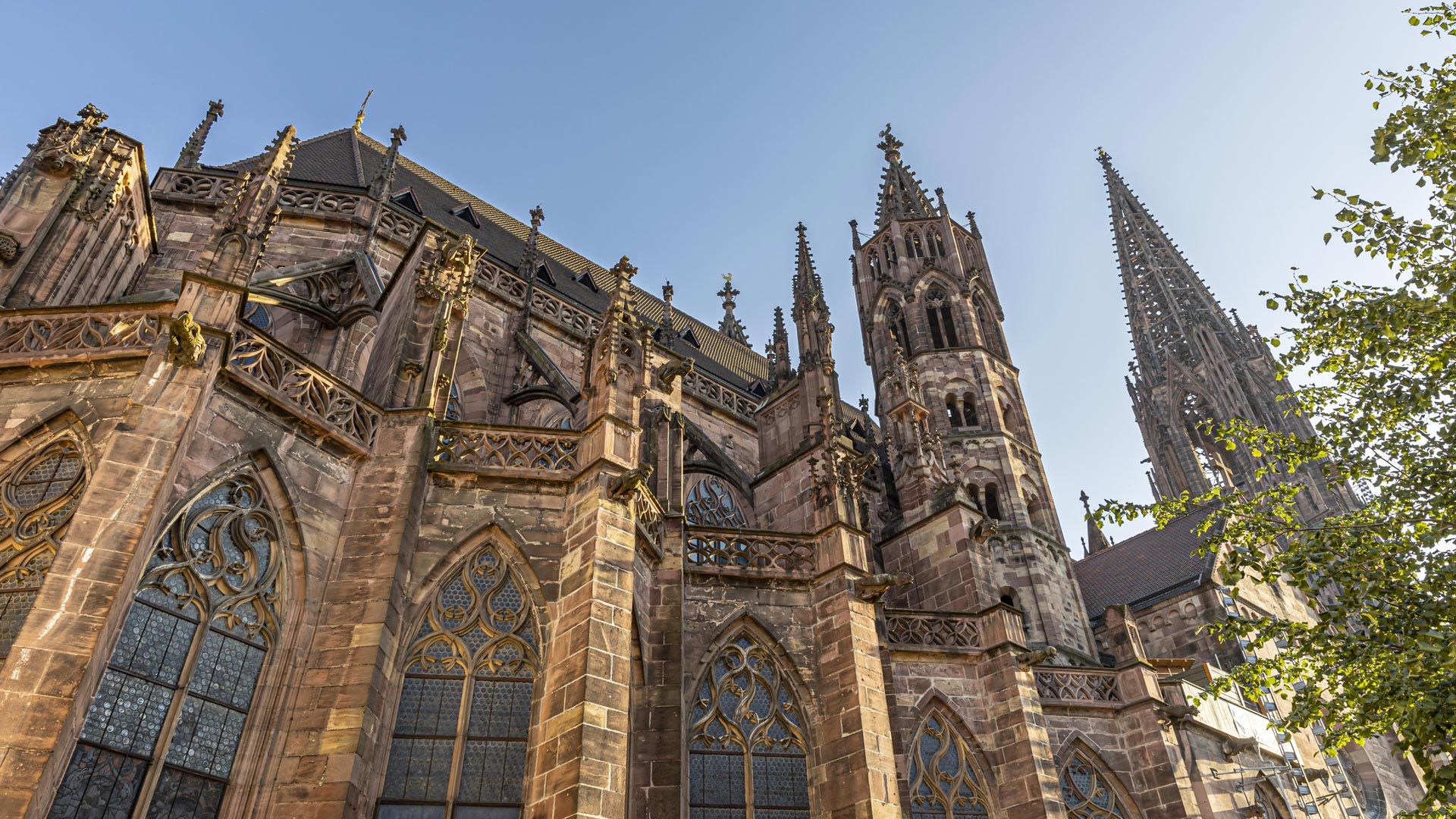
People have been building Freiburg Minster for around 350 years. And they were extraordinarily fast in the process. The Cathedral of Our Lady of Freiburg is not only a landmark of the city, it is also one of the few important churches that were started and completed in the Middle Ages. The building was initiated around 1200 by the last Zähringer, Duke Berthold V. Unlike his predecessors, he did not want to be buried in a monastery in the countryside but directly in Freiburg and commissioned the extension of the city church for this purpose. In 1218, he was buried in what is now the oldest late Romanesque part of the cathedral.
Above all, however, the cathedral is a masterpiece of Gothic architecture: slender pillars, struts and arches point skywards and bring light into the interior. The master builders in Freiburg pushed the limits of what was possible. At the top of the 116 metre high west tower, filigree elements come together to form a lacework of stone - never before had a church tower been built using this technique. The cultural historian Jacob Burckhardt called it "the most beautiful tower on earth" in 1869. And if you ask the people of Freiburg, he is still right today.
Anne-Christine Brehm has been Freiburg's cathedral master builder since 2021. She has long been associated with the cathedral: She wrote her doctoral thesis on one of the cathedral's master builders and developed her love of Gothic architecture in the process.
What makes the cathedral unique?
Clearly the spire. There has never been a construction like this before: completely openwork so that you can look up into the sky from the platform - a window to the heavens, so to speak.
So is the famous quote from art historian Jacob Burckhardt that the cathedral has the "most beautiful tower in human history" true?
Yes, and for me it's not just because of the spire. The way the lower part of the tower has been elegantly and cleverly designed is also fascinating. It also shows the self-confidence of the town in the Middle Ages. The counts may have initiated the construction, but the citizens then took over quite quickly.
What does the cathedral mean to the people of Freiburg?
Quite simply: the cathedral is the heart of the city.
The best way to experience the cathedral? After the view to the top, take enough time for the details that tell stories inside and out.
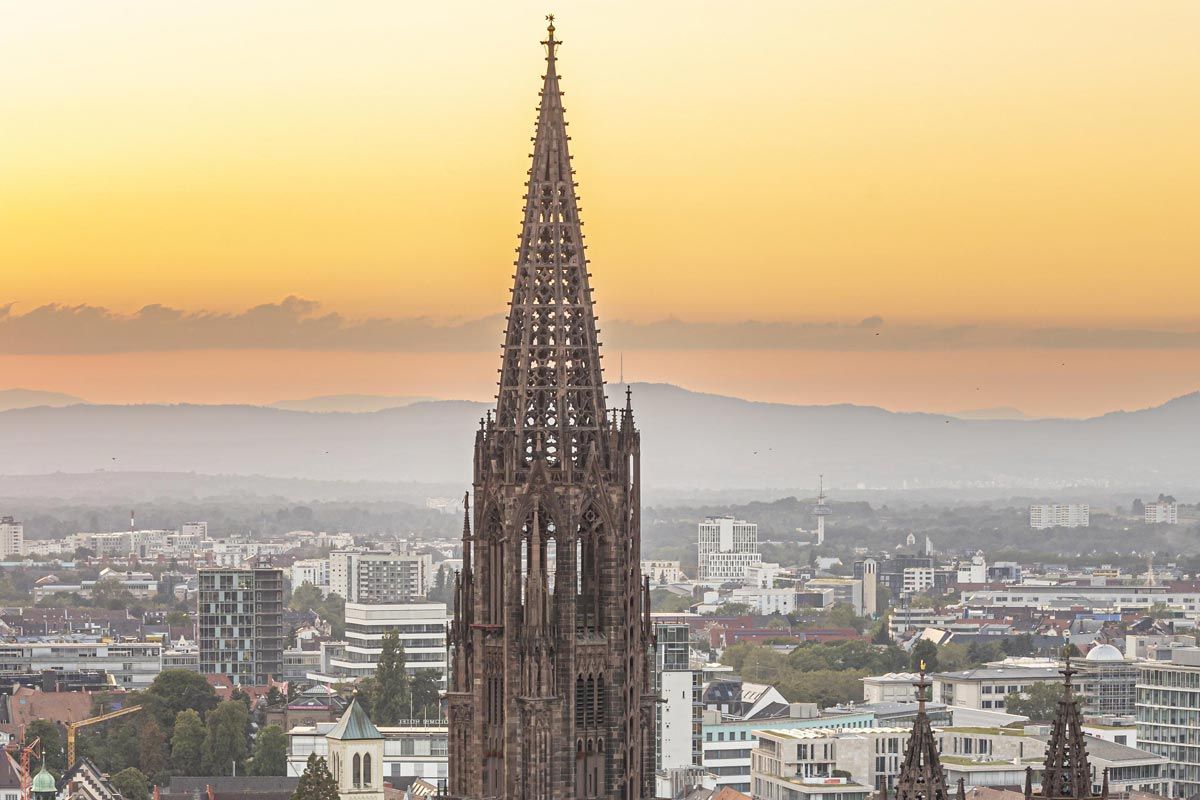
Mighty at the bottom, delicate and flooded with light at the top: the 116 metre high west tower is a masterpiece of Gothic architecture and was one of the tallest church towers in the world when it was completed around 1330. Even more significant than its height, however, is its design: never before had such a tracery helmet crowned a church tower. Fribourg's spire became a model for other cathedrals, for example in Bern or Ulm. The fact that the filigree structure has survived the centuries is due to its sophisticated construction: the 46 metre high spire rests on an octagonal substructure. The openwork structure is supported all around by stone struts, which were reinforced with iron rods as early as the Middle Ages.
When does the tower's magic work most powerfully? When red-golden rays at sunrise or sunset cast the stone patterns in a very special light.
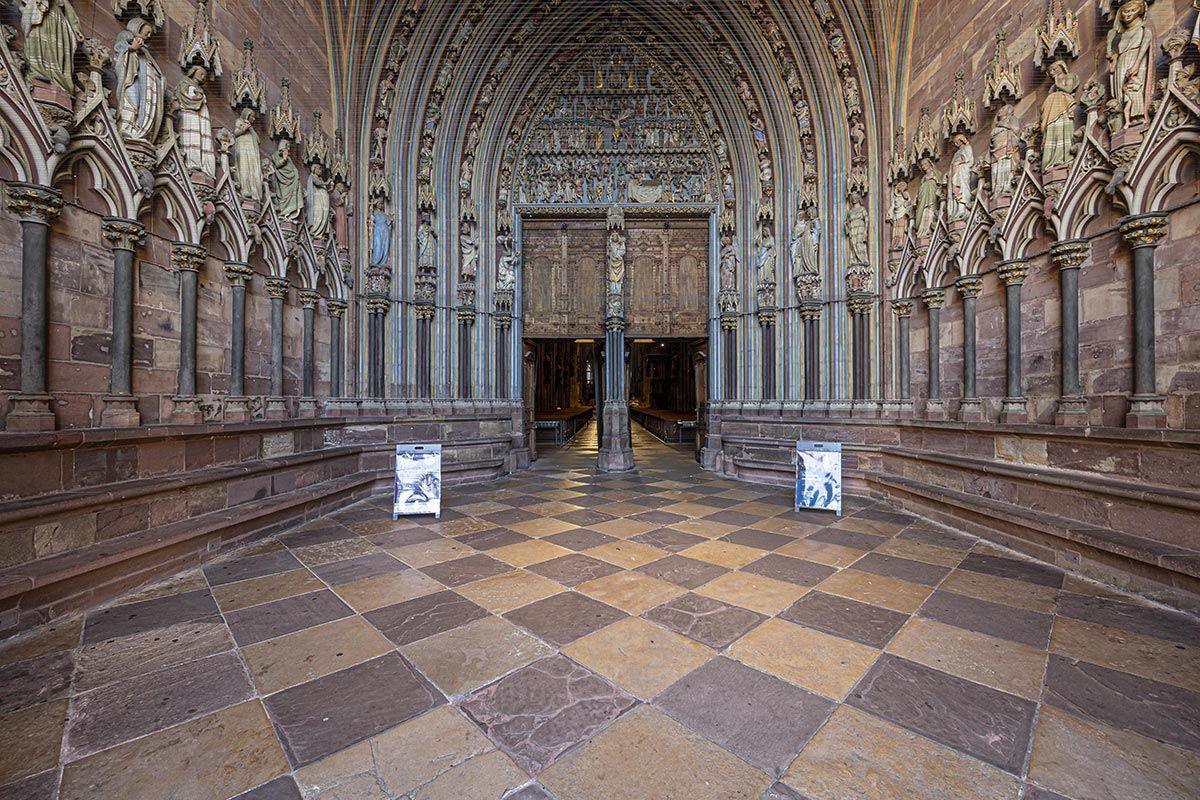
Saints and nobles, devils and bishops, Adam and Eve: more than 400 figures adorn the entrance on the west side. For people in the Middle Ages, they were much more than just decoration - the entrance to the church was a place of education. Hardly anyone in the city could read at the time, which made this vestibule all the more important, telling the most important stories from the Old and New Testaments like a picture Bible. The central motifs are the life and suffering of Jesus and the detailed depiction of the Last Judgement directly above the entrance door. The wealth of detail with which painters and sculptors worked at the time is impressive. Pay attention, for example, to the little devil who is trying to tip the scales of evil deeds in his favour directly above the door.
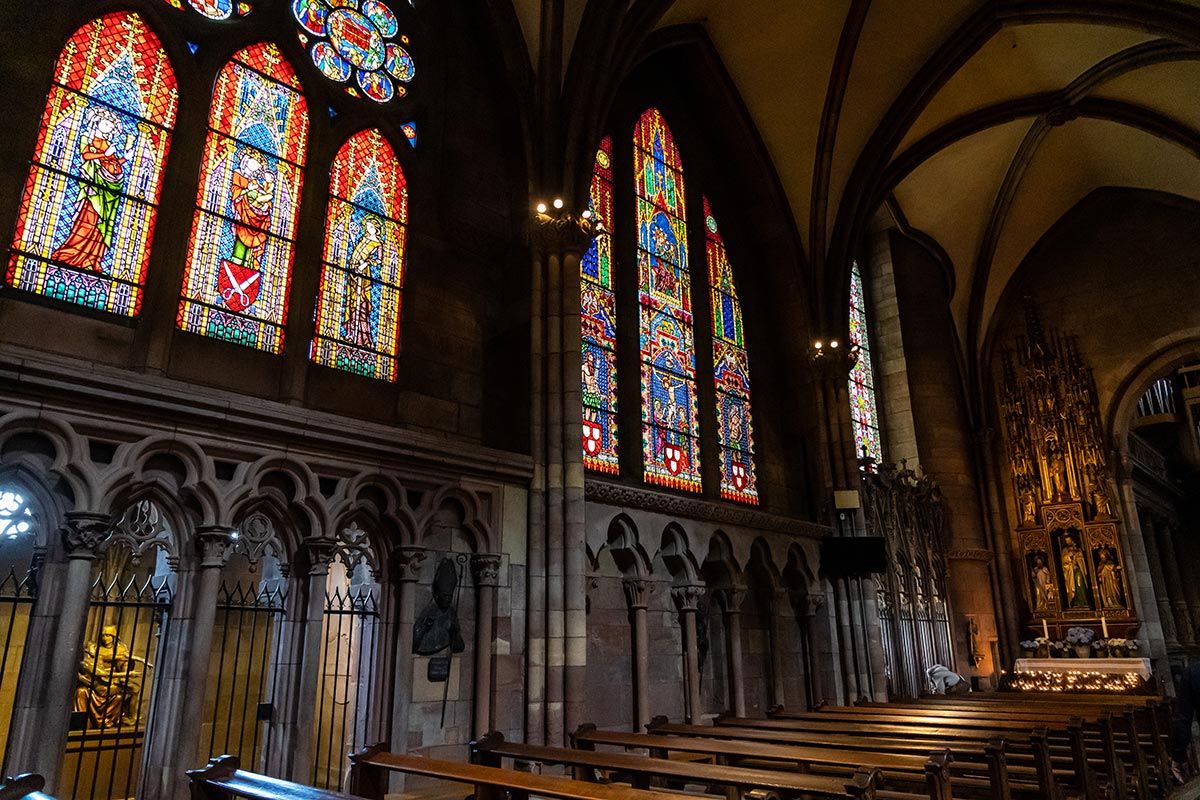
They are the eye-catcher in the nave of the cathedral: the artistically designed coloured windows were often donated by guilds. This was not only done in praise of God, but also because the communities of bakers, blacksmiths, tailors or shoemakers could literally give themselves a shop window. They confidently displayed their coats of arms in the lower part of the windows, and there was a good chance that some churchgoers' thoughts would linger on these medieval advertising spaces during the several hours of mass. Like the portal hall, the windows also tell stories from the Bible with great attention to detail, and often with humour. For example, the window of the smithy in the top left-hand element shows an ox chewing on the nappy of the newborn baby Jesus.
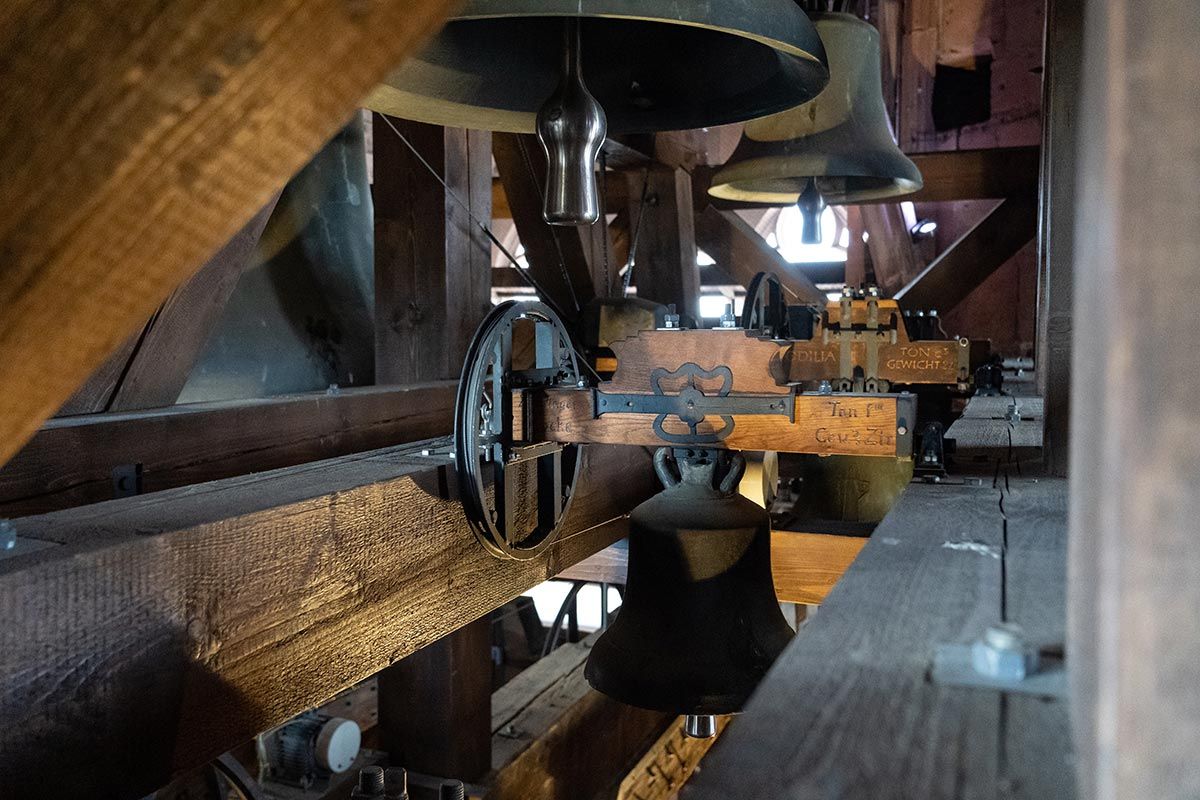
Its sound belongs to Freiburg: the mighty bell rings out every Thursday and Friday - and every year on 27 November. With a diameter of over 1.60 metres, the Hosanna, cast in 1258, was the largest bell in Freiburg Cathedral for centuries. It no longer holds this record, but it is and remains the city's most famous bell. Its piercing E flat tone rings out every Thursday evening after the Angelus prayer and on Fridays at 11 a.m. to commemorate the crucifixion of Jesus. Every year, its ringing also commemorates the devastating bombing raid that destroyed large parts of the old town on 27 November 1944. Miraculously, the cathedral remained unscathed at the time.
